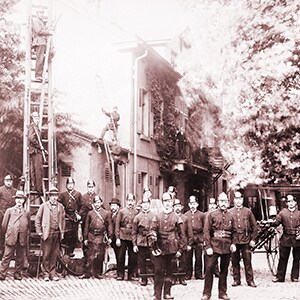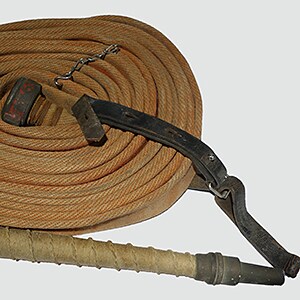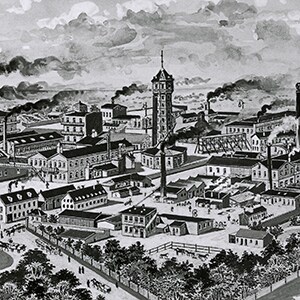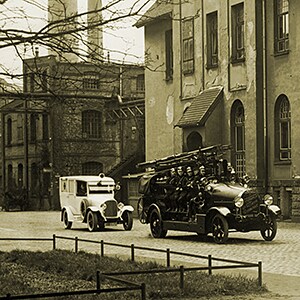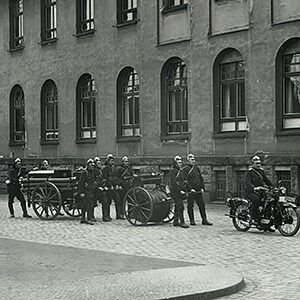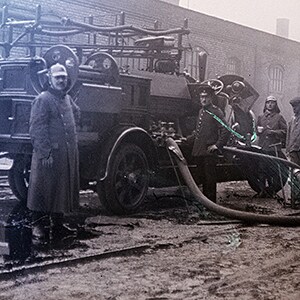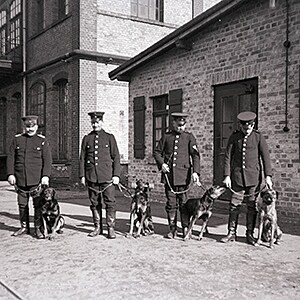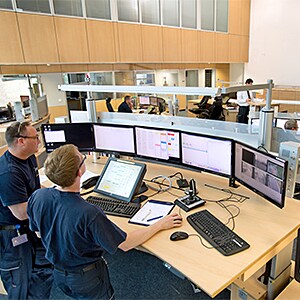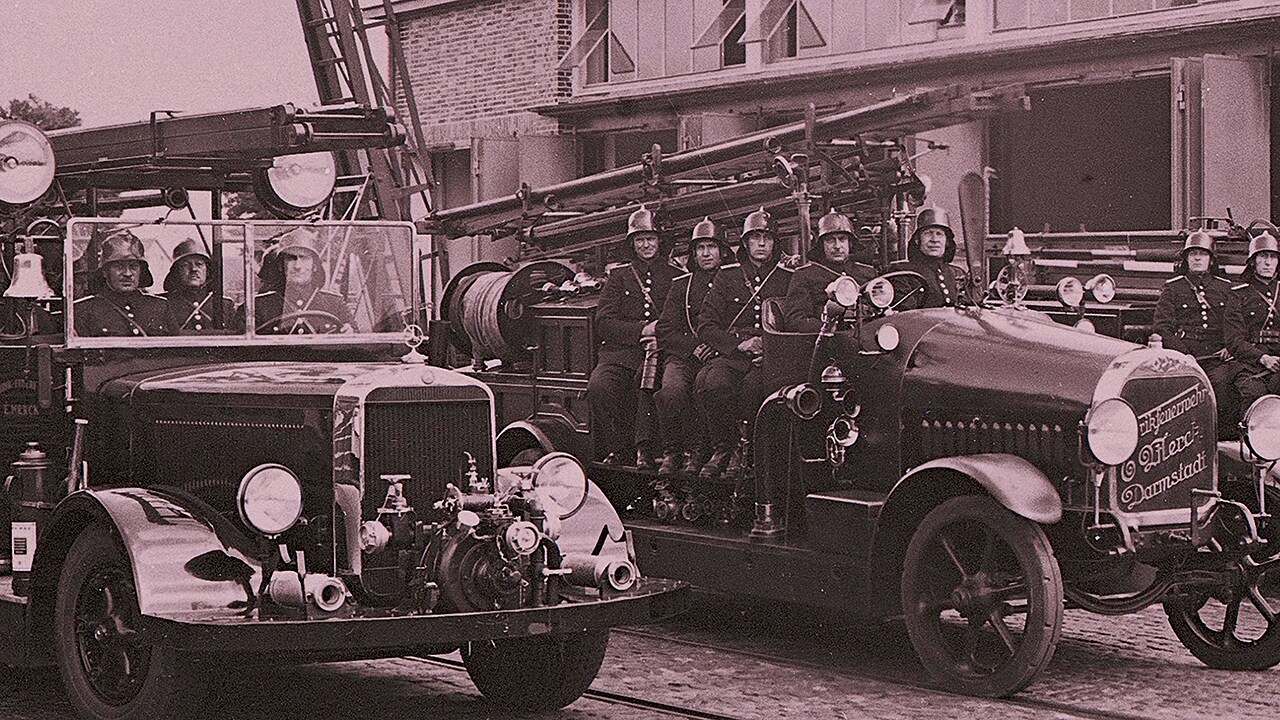
»Around this time in autumn 1922, we had our first major fire in the factory.«
Albert Schumacher, commercial director, activity report 1888-1928
At the end of the 19th century, the company has about 1,000 employees. The factory premises in the eastern part of Darmstadt have long closed in on the city. Smoking in the factory is strictly prohibited. Employees are called upon to exercise the greatest caution in »dealing with flammable substances«. When a fire breaks out, it can easily pose a threat beyond the site premises.
The first documentable evidence of a factory fire brigade appears in the Factory Regulation of 1884. Anyone who wished to rent a company apartment was advised to join the »factory fire brigade«.
In 1919, the fire brigade at E. Merck, Darmstadt, Germany, becomes a professional force. Company headquarters have been located on Frankfurter Strasse for 15 years, and World War I has just ended.
The impetus comes from routine audits by the government authorities. Due to the »size of the factory and the risk of fire in individual units«, the authorities believed it was necessary to »set up a permanent fire brigade, in addition to retaining the existing brigade, and to entrust the leadership of both to a professionally trained fire chief«.
The factory fire brigade receives its first fire engine in 1921, a modern motorized model from Opel. For the »teams«, this means »daily instruction« and »drills«. »To ensure unhindered driving of the fire engine […] , some of the factory streets« are paved.
In case of an emergency, all parties involved must be able to rely on one another blindly. A report from 1907 describes the fire brigade staff living at and around the factory as »so well trained that they form a complete fire brigade and, in the event that a fire breaks out outside working hours, will be able to fight the fire with all apparatus and equipment«.
The fire brigade staff are on duty 24 hours a day. For this reason, one of the firemen must request a transfer after four years of service. His wife is ill, and there is no one to look after the children. He cannot afford outside help.
In the 1920s and 1930s, the company fire brigade consists of 35 to 45 employees. Their duties include not only fire prevention and firefighting, but also supervising site safety, attending to injured individuals, ensuring air-raid precautions, and monitoring nighttime production runs.
The first major test comes in September 1922. The warehouse for pharmaceutical raw materials is in flames. Cocoa shells have ignited, and the plant substances stored here provide plenty of fuel for the fire. Nothing like this should ever happen again. Accordingly, when the large building undergoes reconstruction, it is subdivided by a fire wall, and the staircases are moved to the exterior. Safety is a top priority.
Firefighters must train for emergencies, like these volunteer members of the company fire brigade around 1902. The firehose also comes into use around this time – with an exterior made of hemp and a rubberized lining. The water tower ensures stable pressure in the internal service water system and provides a water reserve, two aspects that are also important for fire protection.
In 1927, the fire brigade has its own ambulance and a fire engine, both Opel models with right-hand drive, a gasoline-driven motor pump on a single-axis chassis, a hose reel, and a motorcycle for the man sounding the alarm. Radio communication during deployments is not yet common.
Early on, site security is also one of the fire brigade’s duties. This includes patrolling the site with dogs as well as monitoring the equipment inside the production units. Duty rosters are posted on notice boards on the outside of the buildings. A glimpse inside the security control center in 2019 reveals the immense development of the site fire brigade.

